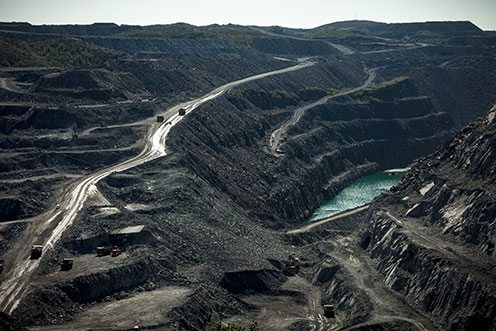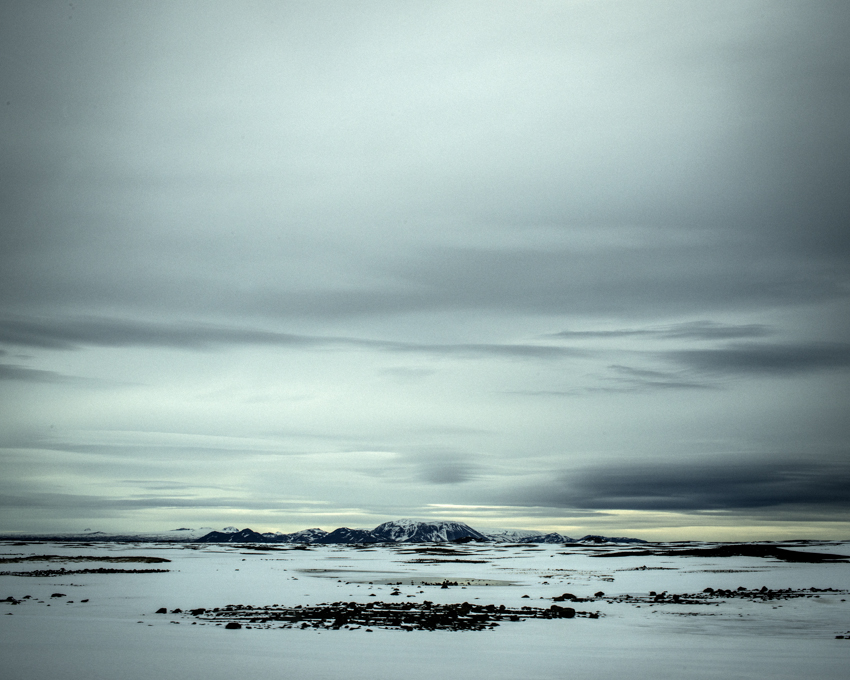
This article, in French, appeared in the print version of Le Monde. It is part 6 of a special 6-part summer series. See the full multi-media feature online.
It's 2.30 a.m. in Kirkenes, a town on the Barents Sea, the time when the four pubs and night clubs kick out their last customers. Kirkenes, located 500 kilometers north of the Arctic Circle, has a population of 3,500. Less than 15 kilometers away is Storskog, where Norway's border meets with Russia. The fjord here is a mirror image of the Lapp landscape, a relic of the ice age.
Soon, if the vision of a Norwegian shipowner takes shape, ice-class cargo ships from South Korea and from China will transit through the fjord on their route west. Kirkenes, whose streets are usually deserted, will become a hub along this new commercial shipping route linking Europe and Asia, by way of northern Russia.
The melting icepack will thus become an economic asset. It's mid-June, and the highest ever temperatures have been recorded—close to 30ºC (86ºF) during the day.
During the month of June, the sun shines on at midnight, and as a result, people don't get much sleep. On this Saturday evening, officers patrol the streets, keeping an eye on some 50 soldiers on leave for the night and with plans to paint the town.
"I'm just hoping these guys don't try to kiss me," says a pretty brown-haired girl in uniform. One belligerent young man is hauled away by the police; another is told to move along. In the middle of the group is a young woman who doesn't seem to know which end is up.
The presence of a 200-soldier garrison is intended to demonstrate Norway's sovereignty in this isolated border area. It is located a mere 250 kilometers from the famous Russian Northern Fleet—the most powerful in the Russian Navy—based in Severomorsk.
"It's a peaceful border," assures the local chief of police, Ellen Katrine Haetta. As it was during the Cold War when the frontier, spanning 196 kilometers, was one of two land borders between NATO and the Communist Bloc. (The other was the Turkey-USSR.)
"The people of Kirkenes have not forgotten that in 1944 it was the Soviets who came to liberate them from the Nazis," recalls Karl-Magne Wille, a Norwegian. With his Russian wife Ludmila, he runs a little souvenir shop along the pier, next to where the Hurtigruten docks. The Hurtigruten is a tourist ferry that cruises daily up and down the Norwegian coast. In Kirkenes, where five to ten percent of residents are Russian, so too are many of the street names. And as of May 2012, local residents traveling within a 30-kilometer radius on either side of the border are no longer required to hold a visa.
It's these developments that caught the eye of shipping magnate Felix Tschudi, a fourth generation president of Tschudi Shipping Company, based in the south.
"This is the most exciting border area in Norway," says the golden-tanned millionaire. Between 1986 and 1989, he worked in an Austrian bank that specialized in business with the Warsaw Pact countries. It was here that he became passionate about developing trade with the East.
With the collapse of the Soviet Union, Tschudi's interest in Kirkenes began. He could see in this quiet, down-at-the-heels town a perfect gateway to Russia. However, he would have to bide his time. He got lucky years later when, in 1997, the Norwegian government decided to shut down the Sydvaranger iron ore mine. Located about 12 kilometers from Kirkenes, the mine employed hundreds of workers who extract the ore and send it by rail to the port, where it is refined and shipped out by boat.
Since the 1980s, the mine was losing money, but during this Cold War era, the government was prepared to make financial sacrifices to assure the residents would stay put and keep the border lands populated. After the fall of the Soviet Union and the end of the Cold War, Oslo no longer wished to foot the bill.
Tschudi seized the moment. He bought out the entire mining operation, including the ore processing plant, adjoining lands and port assets, for 102 million Krone ($18 million), and reopened the mine in 2006. The Norwegian shipowner went to Australia to set up The Northern Iron Limited, a company listed on the Sydney stock exchange, that henceforth would be owned by Sydvaranger AS. Tschudi still holds 20 percent of the shares.
"I wasn't interested in the mine" admits the businessman. "Reopening was an option, but I bought this company primarily for its port facilities and its potential as a hub for transport and logistics."
And so was born the Kirkenes Industrial Logistics Area project, or "Kila." As the western gateway to the Northeast Passage, it would handle maintenance, cargo offloading and all other activities relating to Arctic maritime services. The area falls under the jurisdiction of Murmansk, the home port for Russia's nuclear-powered icebreakers—the region's true authorities.
Trond Dahlberg, a third generation miner from Kirkenes who runs the Kila project under the Tschudi Group umbrella, led us through the site of the new port, not yet up and running.
Part of the fjord behind the city was filled with residual rock from the mine to create a strip of land reclaimed from the sea in the early 1970s. It will require recasting but in time will house the new shipping terminal for vessels that traverse the Northeast Passage. This route will shorten the trip by 20 days and save the shipowners several million dollars per trip, since "Kirkenes is Europe's closest port to Asia," the entrepreneur points out.
To implement his dream, Tschudi set up a meeting in April 2010 with all the potential players in this project, notably Rosatom, the Murmansk-based company that manages the nuclear-powered icebreakers and is charged with pursuing business interests here. When it comes to developing the northern sea route, Norwegian and Russian interests align. Tschudi is hoping the project will be lucrative for Kirkenes. The Russians, who charge $400,000 to charter one of their icebreakers, plan to multiply their ports of call.
In September 2010, the Nordic-Barents, chartered by Tschudi, became the first foreign vessel to transit nonstop through the Northeast Passage to China. This was a media coup that put the spotlight squarely on the new sea route that is now open to international trade. Between summer and fall of 2012, only 46 ships have made the transit through the Northern Sea Route--equivalent to the number of registered vessels that transit the Suez Canal in one day. Still, the project is under way.
But the Tschudi saga has not been without its ups and downs.
"Some believe he paid too little for the mine," says local Labor party activist Lena Bergeng. "Opinion in the community was divided but either way, the money was needed."
Additionally, the reindeer breeders say the logistics projects being developed by Tschudi and the Nor Terminal oil project on the other side of the fjord, are threatening their livelihood.
"Reindeer need access to the salts and minerals of coastal land in order to stay healthy," says Egil Kalliainen, district manager and reindeer breeder.
Waste from the mine is creating further controversy.
Transported directly by an underground tunnel, the ore residue, replete with chemical products, is piled up in the fjord, in view of the town center. Ostensibly, nobody seems to suspect anything is amiss.
"Yet the fjord's entire basin floor is dead," fumes Bernt Nielsen, who heads up an association that opposes the dumping of waste. The company claims that any other solution would be too costly and maybe force them to close the mine. Bernt Nielsen dismisses this argument:
"They could improve their production methods but then their profits would be less. That's all there is to it. Not to mention that there was no unemployment here before the mine reopened."
The future of the mine is up in the air, and possibly may be sold. Nickolai Joahnsen, 23, has operated one of the giant dump trucks for three years, transporting up to 150 tons of gray rock and ore from the bottom of the open-pit mine to an area some way off. But he's worried. He likes his job. Previously he worked as a salesperson in a shop, drove a taxi and was unemployed for a time. He appreciates his job, the good pay, and good friends.
"There's talk that the mine might be sold to the Russians. Does that mean we'll be fired so they can hire Russians for less pay?"
During the 1990s, Kirkenes' economy was saved by the Russian trawlers from Murmansk, who made the town their home port to avoid prohibitive Russian tariffs and red tape. Felix Tschudi hopes that for similar reasons, the modern infrastructure, a more lenient bureaucracy and all the renewed activities will bring prosperity to the region.
After the Russians, maybe the Chinese are next..
Editor's Note: This post was updated on 12/12/13 to correct an editing error. The Russians charge $400,000 to charter an icebreaker, not $40,000 as originally stated.
Translation by Anne Thurow






